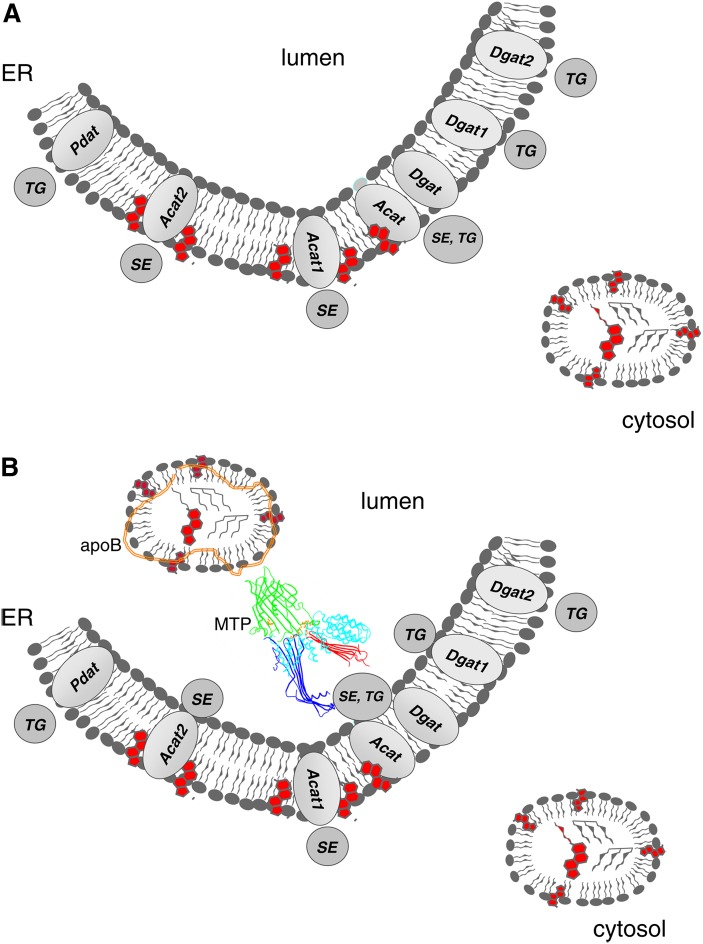Fig.4.
A: Deposition of neutral lipids into the cytosol. In all eukaryotic cells and some bacteria, neutral lipids are deposited into the cytoplasm as phopholipid monolayers surrounding an insoluble core of oil. In mammalian cells and most other eukaryotes, the only necessary factor appears to be neutral lipid biosynthetic reactions, such as the DGAT and PDAT reactions. B: Deposition of neutral lipids into the vesicular secretion pathway. In certain specialized tissues and cells (e.g., hepatocytes, enterocytes), neutral lipids are actively packaged into lipoprotein particles by chaperones and are ultimately secreted. Acyltransferases (Pdat, Acat1, Acat2, Dgat1, Dgat2), lumenal transfer/anchor proteins (MTP and apoB), and neutral lipids (SE and TG) are as described in the text. In some instances, the lipid core of the lipid particle is heterogeneous and of obscure origin in terms of acyltransferase isoform (which is depicted without a numerical assignment).

